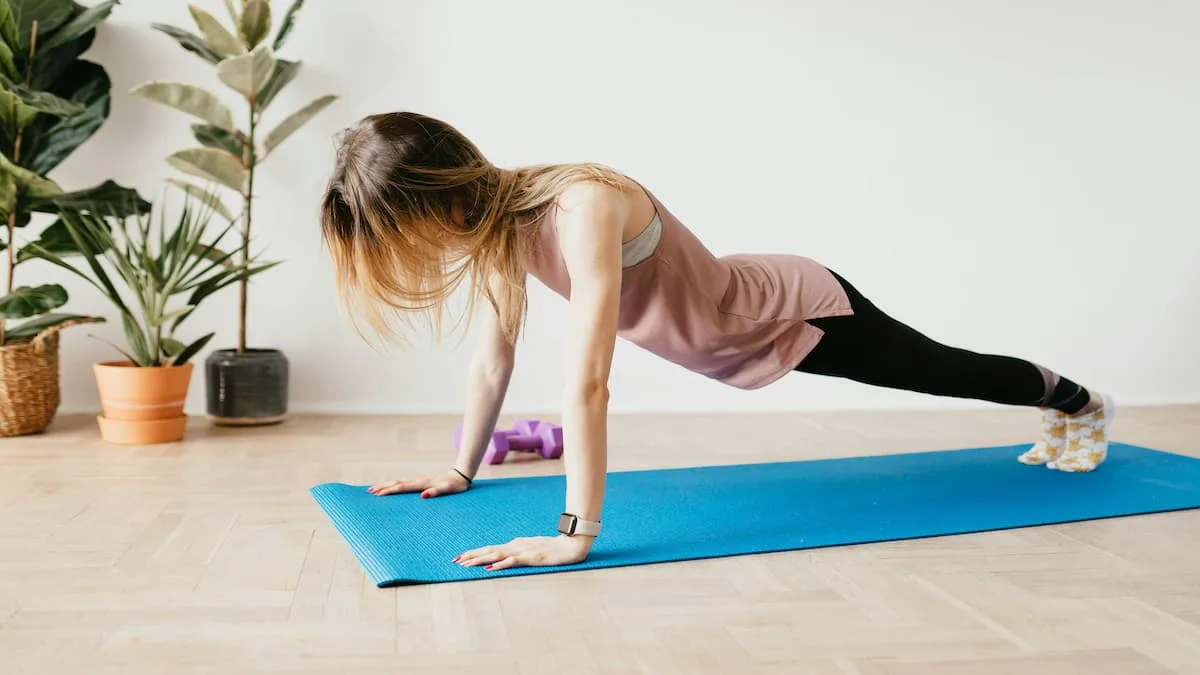Learn to Perform Proper Form Of Plank Pose
The plank pose is a staple in fitness routines worldwide. It’s a simple yet powerful exercise that targets multiple muscle groups. But what makes the proper plank pose so special?
This bodyweight exercise primarily engages your core. It also works your shoulders, back, and even your glutes. However, the plank pose is more than just a physical challenge. It’s a test of mental strength and endurance.
In this guide, we’ll delve into the intricacies of the plank pose. We’ll explore its benefits, provide the steps to perfecting your form, and introduce you to the plank challenge.
Let’s get started.
Understanding the Plank Pose
The plank pose is a foundational exercise in bodyweight training. It’s praised for its simplicity and effectiveness.
Unlike many exercises, the plank requires no equipment, making it accessible for everyone, anywhere. Consistent practice will notably enhance your stability and strength.
The Muscles Involved
Plank exercises engage multiple key muscle groups. They activate your entire core, from the rectus abdominis to the transverse abdominis.
Other muscles involved include:
- Obliques
- Shoulders
- Back
- Glutes
These muscles contribute to overall balance and posture.
Benefits of Regular Practice
Plank in your routine offers numerous benefits. First, it strengthens your core, which is crucial for nearly all physical activity.
Beyond strength, the plank improves posture. It engages muscles that support the spine, reducing the risk of back pain. Regular practice can also boost your metabolism. With more muscle engagement, the plank helps burn calories, supporting weight management.
Proper Plank Steps
To execute the proper plank, start by getting into a push-up position. Align your shoulders directly over your wrists. Your body should form a straight line from head to heels.
Engage your core by pulling your belly button towards your spine. This will help stabilize your body and protect your lower back. Keep your legs straight, with your feet close together.
Ensure your head is in line with your spine. Avoid letting it drop or tilt upwards. This neutral position is key for reducing neck strain.
Breathe steadily while maintaining this position. Focus on smooth, deep breaths. This will help you remain calm and maintain the pose for longer.
Hold the plank as long as you can while maintaining good form. Quality outweighs quantity. Over time, gradually increase your hold duration for better results.
Common Mistakes and How to Avoid Them
One common mistake in plank exercises is allowing hips to sag. This can strain your lower back. To prevent this, engage your core and buttocks.
Another error involves arching or rounding the back, which compromises the exercise’s effectiveness. Focus on your posture alignment to keep your back straight.
Lastly, avoid holding your breath. Breath-holding increases tension. Focus on consistent, even breaths to enhance endurance and relaxation.
Breathing and Mental Focus in Plank Pose
Proper breathing is key when holding a plank pose. It helps supply oxygen to your muscles, reducing fatigue. Inhale deeply through your nose and exhale through your mouth.
Mentally focusing on your form and breathing can enhance your performance. This focus distracts from discomfort and aids in maintaining the plank longer. Imagination of success can boost mental strength during the hold.
Plank Variations for All Levels
Engaging in different plank variations can target various muscles and keep your workouts interesting. These variations accommodate different fitness levels and ensure balanced muscle development. Exploring these options can also aid in overcoming workout plateaus.
Here’s a list of some popular variations:
- Forearm Plank
- Side Plank
- Reverse Plank
- Plank with Leg Lift
- Plank on a Stability Ball
Each variation challenges your body in unique ways. This encourages improvements in strength and stamina, providing complete benefits over time.
Beginner Modifications
For newcomers, starting with knee-supported planks is beneficial. This reduces strain while helping to build core strength. Focus on maintaining proper form and slowly increase duration.
Wall planks are another great option for beginners. These involve holding a plank position with your feet against a wall. This provides stability and control, making it less daunting.
Advanced Challenges
As you gain confidence and strength, introducing more complex planks is advantageous. The forearm side plank targets oblique muscles, adding difficulty.
For an extra challenge, incorporate planks with alternating arm and leg lifts. This increases instability, prompting deeper core engagement. Always prioritize the correct plank pose to prevent injury.
Incorporating Plank Pose into Your Fitness Routine
Incorporating the plank pose into your daily routine is simple yet rewarding. It’s an accessible exercise, requiring minimal time and space. Consistency is key; aim for a few minutes each day.
To maximize benefits, integrate planks into a broader workout regime. Pair them with other core exercises for a comprehensive session. This approach enhances overall strength, stability, and endurance.
The Plank Challenge: Building Endurance
Taking on a plank challenge can notably enhance your stamina over time. Set feasible goals and strive for gradual progress by increasing your hold times daily.
Challenge your body and mind while keeping track of your gains. This boosts motivation, enabling you to break through plateaus and reach new fitness milestones.
Safety Tips and Progression
Safety is crucial when engaging in any exercise, including the plank pose. Start with a warm-up to prepare your body and reduce injury risk. Focus on maintaining proper form throughout the entire pose.
Progression involves slowly increasing your hold time or trying new variations. Respect your body’s limits and rest if needed. Integrating equipment, like stability balls, can add challenge, but approach new variations cautiously. With consistent practice, you’ll enhance your strength and stability safely.
Conclusion
Mastering the proper plank pose takes patience and dedication. Consistency is key to reaping the full benefits of this powerful exercise.
Remember, small improvements add up over time. Stay committed, trust the process, and enjoy the journey towards better strength and stability.
